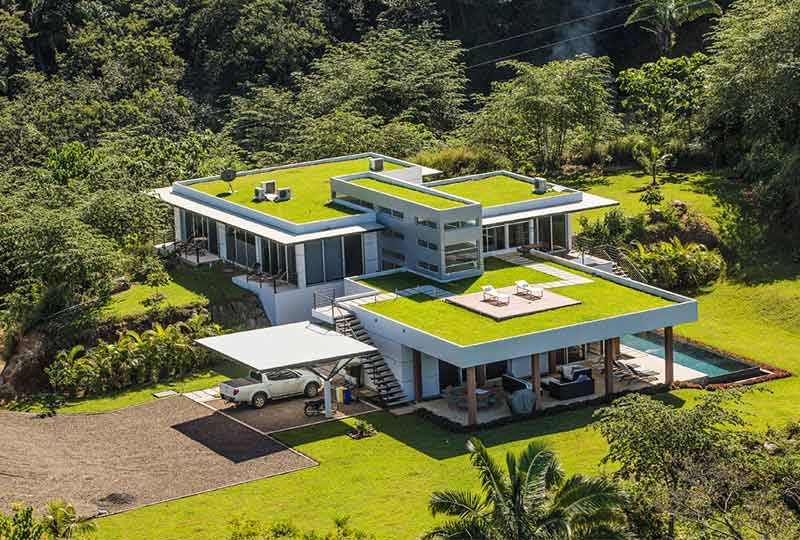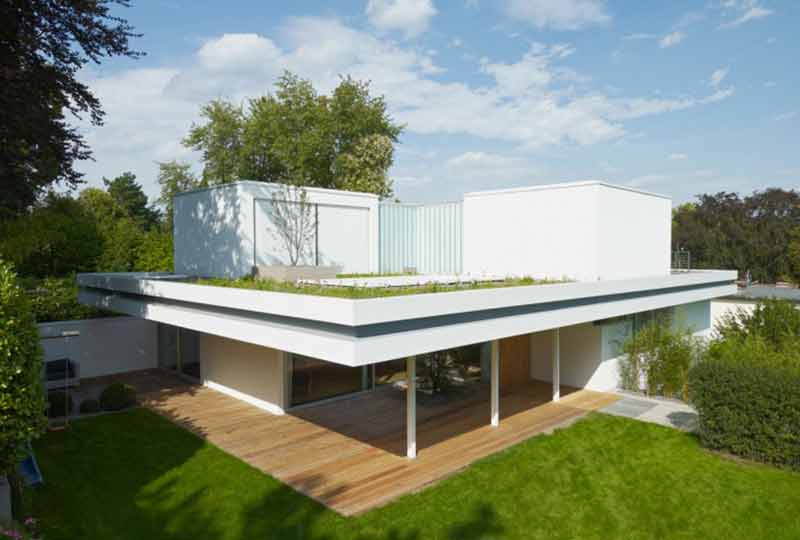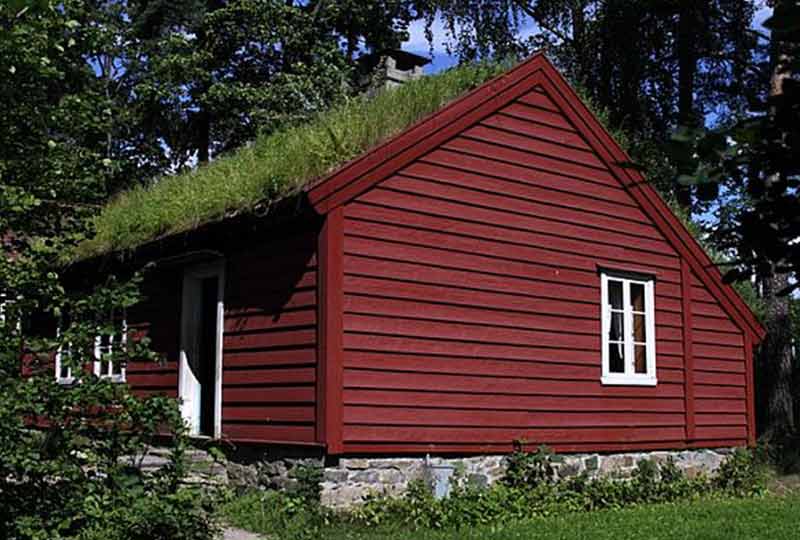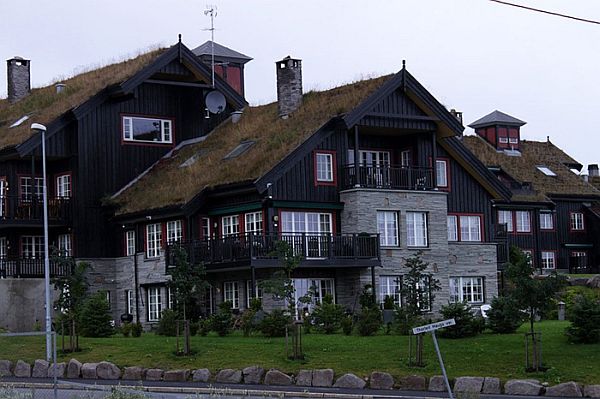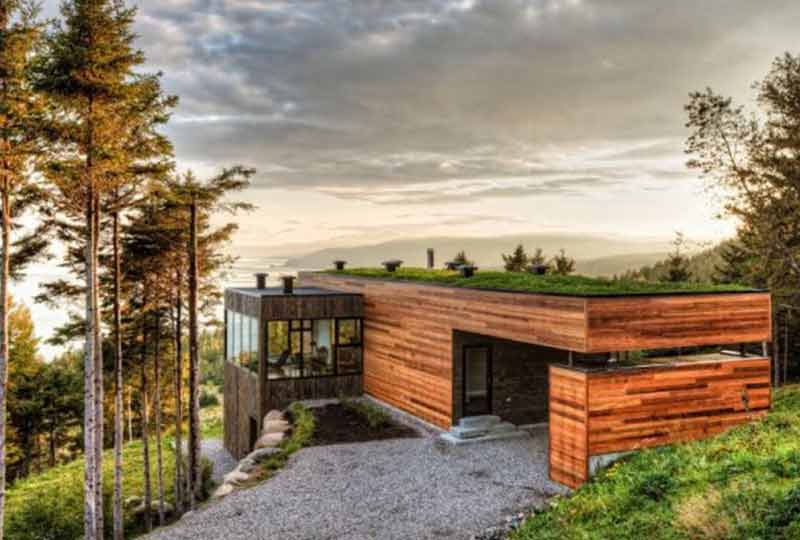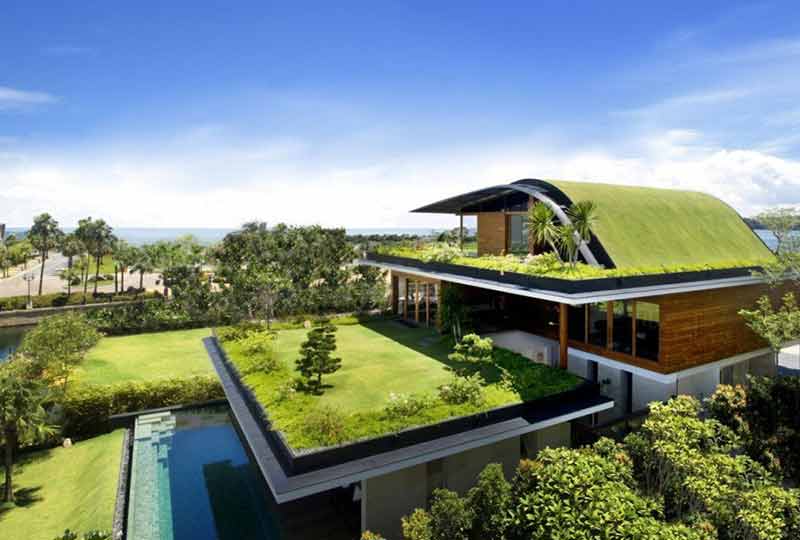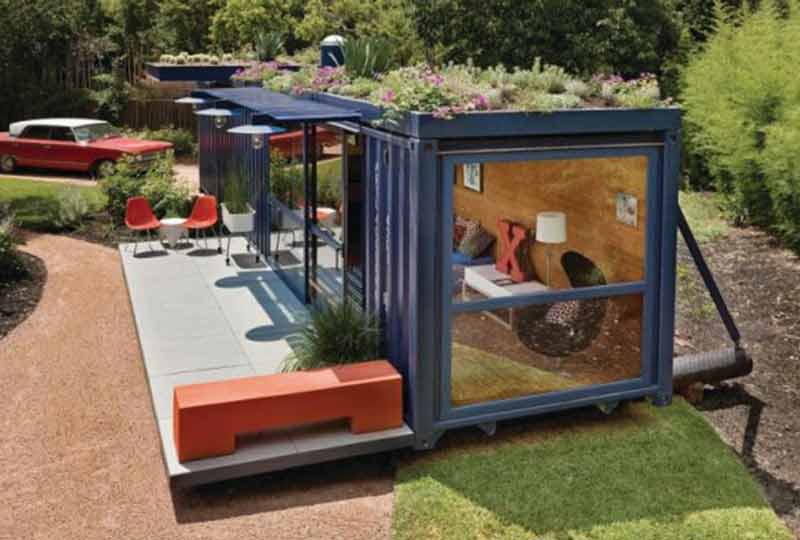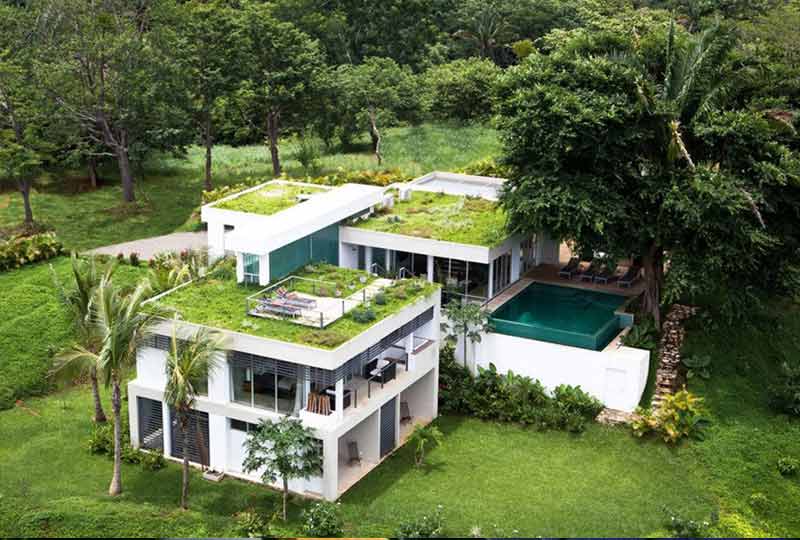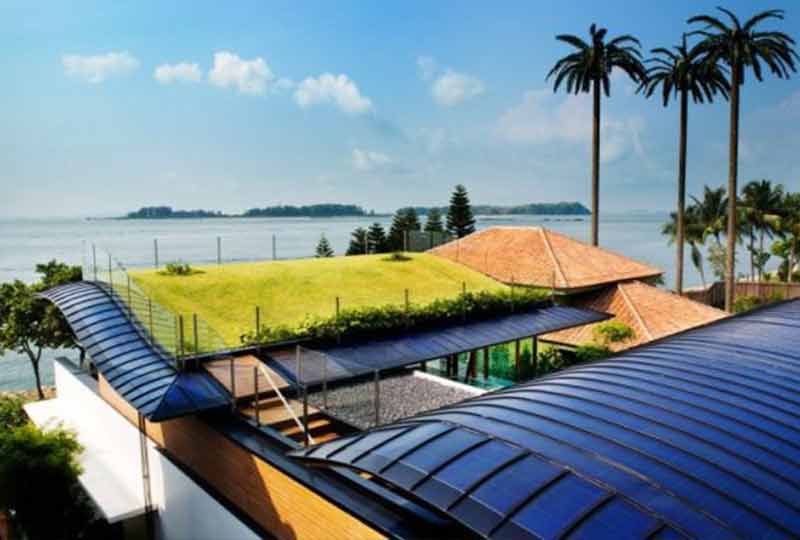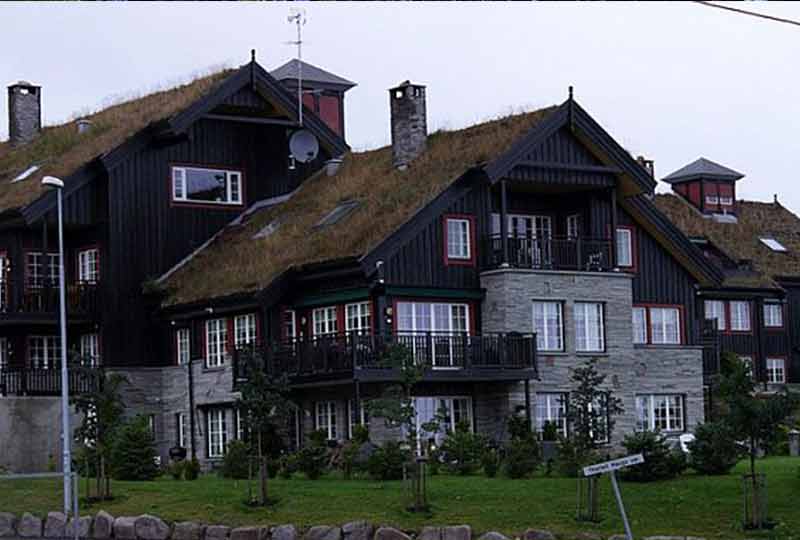Unlike the traditional roofing techniques, green roofing is a recent style where you use vegetation to cover your roof. Herein, learn what this type of roofing is, pictures of houses with green roofs, the types, how they’re constructed, layers, the plants that are used, how much they cost plus more.
What is a Green Roof?
Also referred to as the living roof, this is a type of covering put on top of buildings that features vegetation as its main component. The vegetation covers the roof either partially or completely. This roof has various layering that allows the vegetation to stay without dripping water inside the building but that will be discussed further below.
The green roof will have various plantations, some of which are placed in pots or directly on the soil not only to add beautification to the roof but for various other benefits like absorbing the rainwater or regulating the air temperatures and humidity.
For others, however, the term green roof could mean an ecological approach to the roof to protect the environment from pollution. But in this case, let’s talk more about the former definition.
The living roofs have been in existence since the 18th century when various homes used to use sod roofs on top of the cave like structures to enhance their shelters. The layering with plants was an excellent idea especially for winter seasons since they added a layer of insulation.
Furthermore, the appearance was also embellishing hence great for holding ceremonies. Unfortunately, it didn’t have any layering like waterproofing that protected the interior.
Fast forward to the years the 1960s to 1970s, the green roofs emerged because of a trend again- especially in the European countries. Many people saw them appeasing and went for it. That was when the development of these roofs began and people started creating structures with the substrate, layers, and other plant-based products.
With research from various institutes, the living roofs were seen to have dramatic effects on the environmental temperatures. This then widened the scope and allowed more people to put up green roofs.
Houses with Green Roofs: Pictures
Following is a gallery of houses from that employed this technology
Green Roof Types and How They Work
There roof are three types;
- Extensive
- Intensive
- Semi-intensive
Extensive Green Roofs
These are self-sustaining, lightweight roofs that have plantation as deep as six to 20 cms only. They support under 25 pounds of vegetation per square foot and only require minimum maintenance. They have a very thin layer of soil which is why it also requires very little to no fertilizer.
The layer will lay tightly on top of the waterproof section. You can use an extensive roof for inaccessible roofs, flat iron sloping deck, and lightweight roofs. Grass moss, sedum, and herbs are the most prevalent plant options.
It’s common features include;
- Easy to install and maintain
- Very straightforward to design
- Great for large landscapes
- Build-up height is no longer than 150mm
- No irrigation needed.
2. Intensive Green Roofs
This is the extreme opposite of extensive type. They can hold up to over 150 pounds of vegetation per square foot. They do, however, need a reasonable depth of soil to support the various plantations. Also known as roof gardens, these rooftops are very labor-intensive – the constant maintenance check, adding of fertilizers, regular irrigation, and feeding.
Intensive types can be used as natural gardens, recreational spaces, or areas to grow food or herbs. Common plants used are lawns, shrubs, edible plants, perennial plants, and conifers.
Common features include;
- Build-up height of over 1500 mm
- Hard and soft landscaping
- Wide range of plants and trees
- They offer excellent insulation
3. Semi-intensive Green Roofs
This features a mix of both the intensive and extensive types. They don’t have too much soil depth but have a waterproofing membrane that’s watertight to prevent extreme conditions like pounding water, constant dampness, or exposure to fungi or bacterial organisms.
4. Other Distinctions
Besides these three common types, other technological advances have led to the discovery of other distinctions. For example, the comprehensive green roof that offers excellent plant support with a soil depth similar to the extensive types.
Another distinction is between the pitched and flat green roofs. Pitched is more traditional than the flat but in terms of its design, its cheaper since the roof doesn’t necessarily need waterproof abilities as water wl simply drain as opposed to the flat design. The layering is then different but can’t be classified as either intensive or extensive.
How they’re Constructed + the Layers Involved
The green roof system has six layers, namely;
- Waterproofing
- Root barrier
- Drainage Membrane
- Filter layer / geotextile filter
- Substrate / growing medium
- Vegetation
Waterproofing Layer
Adding a waterproof membrane is an essential step in ensuring the durability of the structure, as well as the vegetation. This key section of the roof is coated using either bitumen membrane, asphalt, or other forms of liquid waterproofing elements such as MB2K compound with kiesol waterproofing primer. This first layer can be added to a concrete deck, sand, plywood, or cement screeds.
Root Barrier
We all know that some roots can grow a little more than expected, which can damage the structure. Hence, there needs to be a root barrier added over the waterproof layer using a polyethylene plastic material taped all around. Especially for intensive green roofs, the shrubs could have vigorous, wood-like roots, which is why this layer is very crucial to the construction.
Drainage Membrane
Similar to other types of roofs, drainage is essential to ensure the roof is not waterlogged. The drainage membrane is used to direct the rainwater to gutters which then goes down the pipes and it’s collected for other purposes.
This system protects the layering of the green roof from saturation, as well as the structure from carrying excess water threatening the structural integrity. These drainage membranes offer adequate drainage both long term and short term while maintaining the health of the living roof.
Green Roof Filter Layer
The fourth layer is the geotextile filter layer that prevents the soil and other substrates from covering the drainage. When the rain pours down to the living roof, there may be soil erosion causing the soil to slide down towards the drain. This can cause serious damage to the roof, which is why the soil filter is crucial to the construction.
Growing/ Substrate Layer
The plants added to the green roof are living plants that need to grow and mature as if they’re in the ground. So for the vegetation to grow effectively, this substrate layer has to have the right medium to allow for the growth of the plants.
There are several things you can add besides the soil, for example, sedum mats and blankets. This is an excellent addition to the filter layer which can be used to cater to the growing medium of the plants.
To select the best layer for this segment, choose something lightweight has good absorption, high drainage, and can adequately support the growth of the plants. You can also add organic materials, mixed with aggregate elements to boost growth.
When you’re out looking for the best substrates, you will find various options in the market, including bricks and aggregates, compost, medium clay soils, and volcanic rocks like lava and pumice, which are all-natural and environmentally-friendly.
Green Roof Vegetation
Finally, the plants added to the layering. There are various options of vegetation you can add, from moss, grass, sedum, shrubs, and herbs. Other green foods could also have flowers, alpine, and pre-grown mats or sedum. It will all depend on the type of roof you have, learn more about this in the section below.
What Plants are used?
The type of plants you use for your living roof will depend on various factors. These could include;
- Climatic conditions
- Depth of the substrate/ medium
- Height of the roof
- Irrigation systems in place
- Load capacity
Either way, there are several plants suitable for extensive green roofs such as the moss, ferns, and shrubs. For semi-intensive roofs; you can have perennial grasses like Rudbeckia. Achillea, Potentilla, Armeria, Dianthus, Helictotrichon sempervirens, and Stipa tenuissima. Intensive types need drought-tolerant plants and can have deeply rooted greenery as well.
Green Roof Costs
The cost of a green roof highly depends on the type of roof you want to install. This is because of factors such as the depth of the substrate, the plants you choose to add to the roof, the use of irrigation, and the size of the roof.
Intensive green roofs will require a much greater investment because of the needed labor to keep the roof alive and healthy. This, however, doesn’t mean that extensive roofs are the cheapest. Let’s have a look at the factors that greatly determine the cost.
What Factors Determine the Cost
Below are some of the prevalent factors that affect the cost of installing a green roof;
- Soil structure and design – an intensive roof has a deeper soil structure with more growth medium than the extensive and semi-intensive green roofs. This means you will need to invest more in the right substrates to fill the medium layer.
- Labor costs – again, the type of green roof will dictate how much labor is put into keeping the roof alive. Intensive roofs have more work like maintenance, cutting weeds, adding irrigation, and checking on the plants generally. Also, you may need to add a laborer to check on the roof meaning more expenses.
- Accessibility – this is a very crucial element when calculating construction costs. If you want the roof to be accessible you will have to invest more. Most extensive green roofs are inaccessible by default, so if you want to reach out, you’ll need to create your own pathway which will cost you.
- Structural engineering – layering the roof isn’t easy. You want to have a beautiful garden and still maintain a good home. For all the construction consulting and working you have to pay, and it will cost you.
- Plants used – some want a lawn, a shrub, herbs, or a beautiful garden. This means you have to spend dearly to get the right quality of plants for your green roof. This will add weight to your bill.
- Biodiversity – you could choose to have a brown roof instead. But this costs more maintenance plus additional installations that will also cost you.
These are just but a few of the factors you need to pay keen attention to. The size of the roof could also cost you because you have more materials to buy.
What is the Average Cost?
On a rather general note, the average amount you can spend to get an extensive green roof is $150 per square meter and $200 for an intensive green roof. However, different installation companies will give you a lesser or higher figure depending on the site specifications and location.
One factor to note is that this type of roof will have very high initial costs with no government subsidies such as those supported with renewable energies such and water, wind, or solar. Considering the running costs, maintenance, and gardening; this venture is rather an expensive one.
However, as the popularity increases over time, the cost may reduce to allow more and more people to embrace this new technological advance.
As an Amazon Associate, we earn from qualifying purchases. Details here

